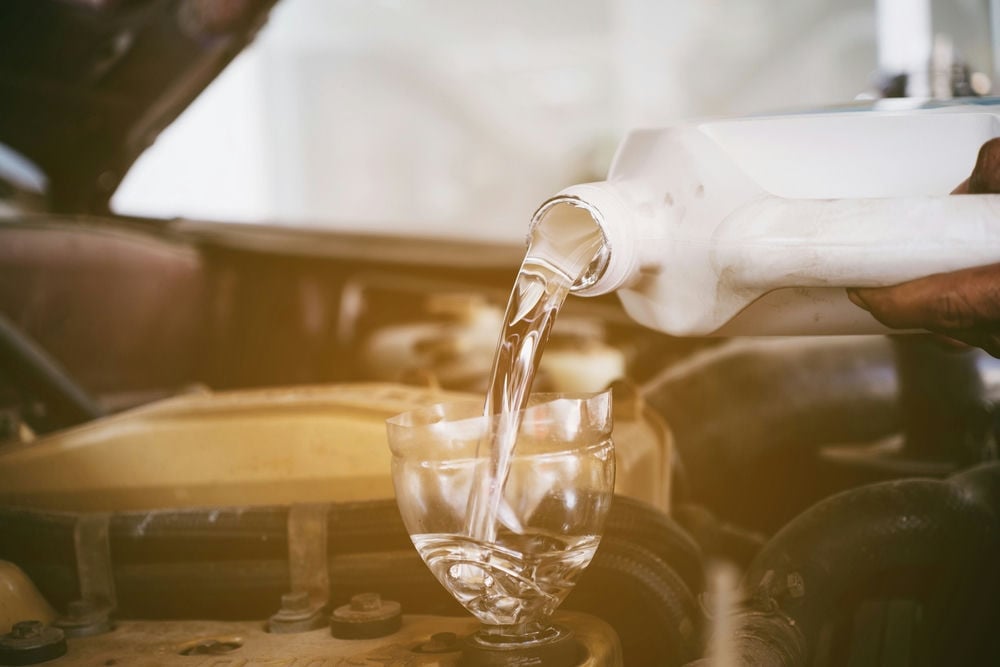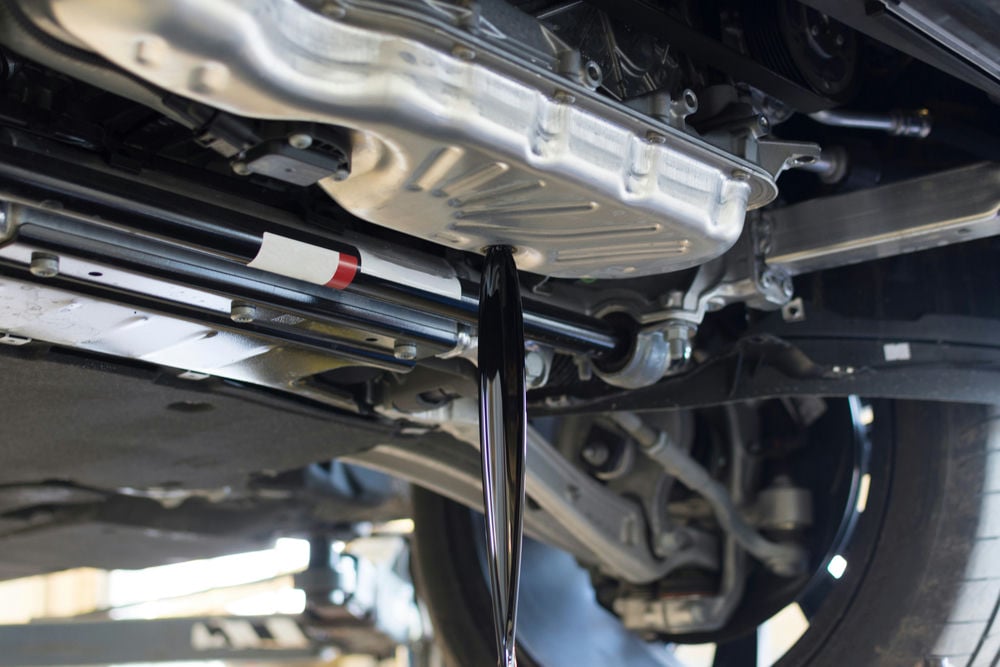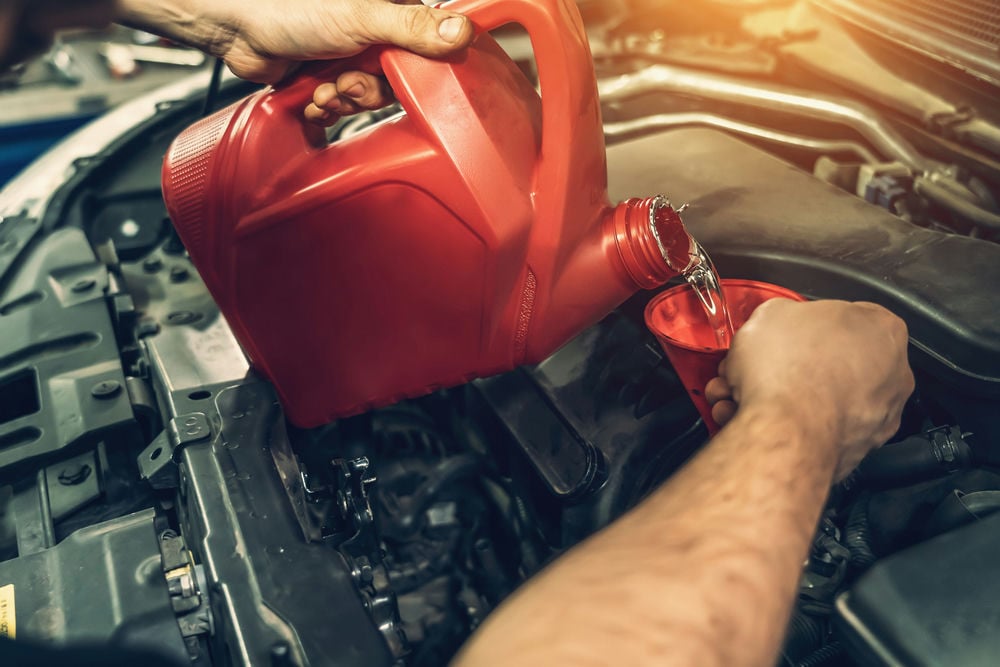Engine flushing is a process of removing the sludge build-up in the engine.
You can leave the engine flush in the engine for 5 to 15 minutes. It
contains various chemicals and additives that can damage your car's
engine if left inside for extended periods.
While motor oil is responsible for keeping the engine clean, if you run
your car infrequently, the oil starts leaving deposits that build up as
sludge inside your engine. An engine flush can help you rid the engine of
oil deposits and gunk.
 Adding engine flush to an engine.
Adding engine flush to an engine.
Can Motor Flush Damage Engine?
Under certain conditions, a motor flush can damage the engine when the
flush chemical is left inside for too long. It may damage the engine
seals, restrict the oil flow, and lead to premature degradation of
engine components.
Using an engine flush also voids your warranty coverage in most cases.
Here is how a motor flush may damage your car's engine:
Premature Degradation Of Engine Components
Motor flush contains additives that may react with the rubber and plastic
parts in the engine. This can cause them to wear out, leading to premature
component degradation and engine failures.
This is the biggest reason car manufacturers advise against using engine
flushes.
Clogging
An engine flush contains additives that loosen and dislodge the deposits so
they can easily flow out along with oil. But once these chunks are
dislodged, there is a chance that they can lodge in other parts of the
engine, such as the screen on the oil pickup tube, piston rings, the narrow
oil ways, or the upper valve train, reducing engine performance or worse,
plugging it.
Leaking
The engine seals inside a high-mileage car are often worn and leaking.
However, the oil sludge and carbon deposits lining the engine mask their
condition and act as a sealant to keep them viable.
Using a motor flush can disturb this sludge layer, removing the barrier
that prevents the oil leak.
 Dirty engine oil being drained after adding engine flush.
Dirty engine oil being drained after adding engine flush.
How To Perform An Engine Flush?
You should follow the motor flush manufacturer's directions to perform
an engine flush.
Flushing an engine typically involves:
-
Draining some amount of the car's engine oil.
-
Pouring the motor flush into the remaining oil.
-
Allowing the mixture to circulate throughout the engine.
Once the engine sludge is suspended in the mixture, you can change the
engine oil and the oil filter.
There are three ways to perform an engine flush:
Take your car for a short drive
After mixing the engine flush with motor oil, take your car for a short
drive to let the chemical flow throughout the engine.
Let it idle for some time
Another way of letting the engine flush circulate throughout the engine is
to idle your car for 5 to 15 minutes. This gives it enough time to mix
thoroughly and dissolve engine sludge.
Use engine flush alone
An alternative way of performing engine flush is to use it alone.
Drain all the oil out and pour in the engine flush. Let the car idle for a
few minutes or take it for a short drive, so the engine flush chemicals
flow to every part of the engine. Now drain it out along with the broken
sludge. Finally, pour in fresh oil and replace the oil filter.
 Adding engine flush chemical to an engine.
Adding engine flush chemical to an engine.
How Often Can You Use Engine Flush?
Ideally, with regular oil changes, you will never need to do an engine
flush.
However, an engine flush may be worth trying if you suspect problems due to
sludge build-up and have consulted with a mechanic.
You should use an engine flush a maximum of once or twice a year,
depending upon your driving habits.
Engine flushes contain potent additives designed to clean the engine's
moving parts actively. But you should not use one very often.
It is the oil's job to remove engine sludge and keep it clean, so if you
periodically change the oil and oil filter in your car, you might not need
to use an engine flushing product.
Are Engine Flushes Recommended?
While many auto experts and oil additive makers advocate using engine
flushes, car makers do not recommend them.
Engine flushes are a controversial product. Although many mechanics and
auto experts recommend using them before every oil change, car
manufacturers are strictly against their usage.
Ford even goes as far as to say that using oil additives or other
engine treatments voids the warranty.
Conclusion
Despite the debate surrounding their usage, engine flushing does hold some
value.
It helps remove the engine sludge, saving it from harmful repercussions.
For example, if you drive your car infrequently or don't conduct timely
engine oil changes, you can use a motor flush to remove engine sludge and
keep the components moving smoothly.
Once you have poured it in, don't let it sit in for more than 15 minutes,
as a prolonged application of engine flush can damage the motor.